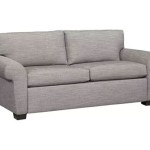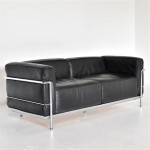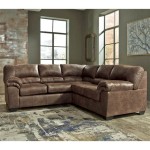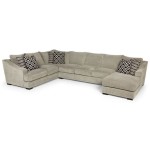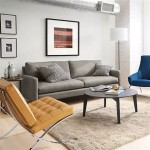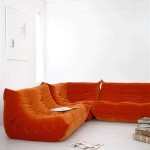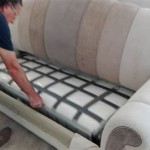Best Height for Sofa Table Lamps: A Comprehensive Guide
Sofa table lamps serve a multifaceted purpose in interior design. They provide ambient lighting, task lighting, and contribute significantly to the aesthetic appeal of a living space. Determining the optimal height for these lamps is crucial for achieving both functional and visual harmony. A poorly chosen height can render the lamp ineffective, creating glare, casting shadows in undesirable areas, or simply looking out of place, affecting the overall ambiance of the room.
Numerous factors influence the ideal height, including the height of the sofa, the size of the room, the overall design style, and the intended purpose of the lamp. A systematic approach is required to navigate these variables and select a lamp height that enhances both the practicality and visual coherence of the living room.
This guide provides a detailed exploration of the considerations involved in choosing the best height for sofa table lamps, ensuring optimal lighting and aesthetic integration into the living space.
Understanding the Standard Height Ranges
While there is no universally "correct" height for sofa table lamps, general guidelines exist to serve as a starting point. These guidelines consider the average dimensions of sofas and the typical height of a seated individual.
Generally, a sofa table lamp’s total height, measured from the base to the top of the lampshade, should fall within the range of 58 to 64 inches (147 to 163 cm). This range typically positions the bottom of the lampshade at or slightly above eye level when seated on the sofa. This configuration minimizes glare and provides a comfortable pool of light for reading or other activities.
However, these are simply guidelines. Deviations are often necessary based on individual circumstances. A lower sofa will naturally necessitate a shorter lamp, while a higher sofa will require a taller one. Similarly, personal preferences for light intensity and distribution can influence the optimal height.
For example, if the sofa is particularly low-slung, a lamp in the 54- to 60-inch range might be more appropriate. Conversely, a higher sofa with thick cushions might require a lamp closer to the 64-inch mark. Careful consideration of these factors is essential for achieving the desired lighting effect and aesthetic balance.
Another common consideration is the height of the table upon which the lamp is placed. The combined height of the table and lamp should still adhere to the 58- to 64-inch range, or adjusted accordingly based on the sofa's height. This combined height provides the overall point to consider when assessing proper placement of the lamp shade and corresponding light distribution.
Key Factors Influencing Lamp Height Selection
Several factors contribute to determining the optimal height for a sofa table lamp. These factors encompass both functional and aesthetic considerations. Addressing these factors methodically will lead to a more informed decision.
Sofa Height: As previously mentioned, the height of the sofa is a primary determinant of the appropriate lamp height. Measure the height of the sofa from the floor to the top of the back cushions. This measurement provides a baseline for determining the required lamp height. A simple rule of thumb is to select a lamp that positions the bottom of the lampshade approximately 4 inches above the eye level of a seated person. This allows for adequate light distribution without creating glare.
Table Height: The height of the side table or end table on which the lamp will be placed is equally crucial. Measure the height of the table and subtract it from the desired total height (58-64 inches, or adjusted based on sofa height) to determine the required height of the lamp base. This ensures that the combined height of the table and lamp falls within the optimal range.
Intended Use: The primary purpose of the lamp will influence the optimal height. If the lamp is primarily intended for reading, a height that allows for direct, focused light onto the reading material is desirable. This may require a slightly taller lamp with a adjustable arm or a lampshade that directs light downwards. If the lamp is primarily for ambient lighting, a height that distributes light evenly throughout the room is more appropriate. This may involve a slightly shorter lamp with a wider lampshade.
Room Size and Scale: The size of the room and the scale of the furniture should also be considered. In a larger room with high ceilings, a taller lamp can help to visually ground the space and create a sense of proportion. In a smaller room with low ceilings, a shorter lamp may be more appropriate to avoid overwhelming the space. The visual "weight" of the lamp should complement the other furnishings in the room.
Personal Preference: While guidelines and best practices exist, personal preference ultimately plays a significant role. Individuals may prefer a brighter or dimmer light, a wider or narrower beam of light, or a specific aesthetic style. Experimentation and visual assessment are essential for determining the optimal height that aligns with individual preferences. Mock up the desired height with books or boxes beneath the lamp to get a visual representation of the final product.
Practical Tips for Determining Optimal Lamp Height
Beyond the fundamental considerations, several practical tips can aid in determining the ideal height for sofa table lamps. These tips focus on visual assessment and experimentation to ensure a harmonious and functional lighting scheme.
Mock-Up the Height: Before purchasing a lamp, simulate the desired height using books or boxes. Place these items on the end table and position the existing table lamp on top. Adjust the stack of books or boxes until the lampshade is at the desired height relative to the sofa. This provides a visual representation of the final lamp placement and allows for adjustments before making a purchase. Have a person sit on the sofa while adjusting the simulated height to ensure it aligns with their visual comfort.
Consider Lamp Shade Dimensions: The size and shape of the lampshade will affect the distribution of light. A wider lampshade will distribute light more broadly, while a narrower lampshade will focus light more directly. Consider the lampshade dimensions when determining the overall lamp height. A larger lampshade may require a slightly taller lamp to prevent it from overwhelming the table or sofa. Note that the lampshade's material, whether opaque or translucent, will also impact how light is filtered and distributed. Darker shades typically direct light up and down, while lighter shades allow light to diffuse more evenly.
Assess Light Distribution: Evaluate the distribution of light from the simulated lamp height. Observe how the light falls on the surrounding surfaces and objects. Is the light evenly distributed, or are there areas of shadow or glare? Adjust the height until the light distribution is optimal for the intended purpose. This may involve moving the lamp slightly closer to or further away from the sofa, or adjusting the angle of the lampshade. Check for reflected light causing unwanted glare on screens or other glossy surfaces.
Account for Task Lighting Needs: If the lamp is intended for reading or other tasks, ensure that the light is directed appropriately onto the work surface. This may require a lamp with an adjustable arm or a lampshade that can be tilted. The lamp should also provide sufficient brightness to illuminate the task without causing eye strain. Consider the type of light bulb used. LED bulbs offer versatility in color temperature and brightness, allowing for customization based on task requirements.
Evaluate Aesthetic Harmony: Consider the overall aesthetic coherence of the room. The lamp should complement the style and scale of the other furnishings. A taller, more substantial lamp may be appropriate in a larger, more formal room, while a shorter, more delicate lamp may be better suited for a smaller, more casual space. Select lamp styles that align with the room's overall design theme. For example, a modern space may benefit from a sleek, minimalist lamp, while a traditional space may call for a more ornate, classic design.
Test Multiple Heights: Do not settle on the first height that seems reasonable. Experiment with different heights to determine which provides the most optimal combination of function and aesthetics. A difference of even a few inches can significantly impact the perceived height and the overall lighting effect. Take photographs of different heights and compare them side-by-side to make a more informed decision. Consider the time of day and the ambient light in the room when testing different heights. The optimal height may vary depending on the amount of natural light present.
By carefully considering these factors and following these practical tips, individuals can select the best height for sofa table lamps, enhancing both the functionality and visual appeal of their living spaces.

30 Table Lamps Sources What Size To Get Laurel Home

How To Choose The Correct Lamp Size Guide Front Door

How To Choose The Correct Lamp Size Guide Front Door

How To Find The Perfect Table Lamp Ideas Advice Lamps Plus

How To Choose The Correct Lamp Size Guide Front Door

Star Furniture

How To Find The Perfect Table Lamp Ideas Advice Lamps Plus

How To Pick The Right Size Lamp Every Time Olive June

How To Pick The Right Size Lamp Every Time Olive June

How To Find The Perfect Table Lamp Ideas Advice Lamps Plus


